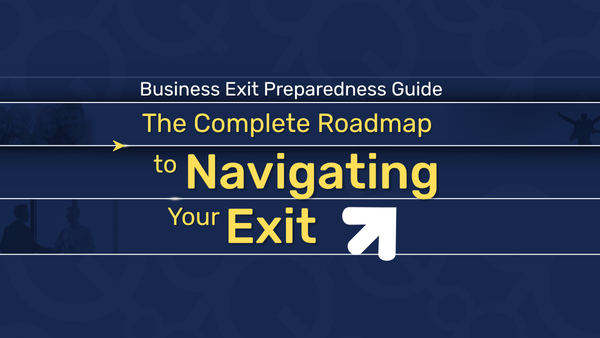Most business owners are familiar with the traditional signals that suggest it’s time to exit: declining profits, retirement age, or an unsolicited offer. However, the most crucial indicators often operate beneath the surface. Recognizing these subtle signs early can mean the difference between a good exit and a great one – or between proactively choosing your terms versus reactively responding to market pressures.
The early signals of exit readiness often whisper rather than shout. Understanding these indicators can help business owners make strategic decisions about timing and preparation, ultimately maximizing both personal satisfaction and business value.

Your Innovation Muscle Is Weakening
The “comfort zone trap” occurs when leaders consistently choose safer, incremental improvements over bold innovations. While the business may still show growth, this mindset shift often indicates a transition from growth-oriented leadership to maintenance-focused operations.
Key metrics can help identify this pattern: track the number of new initiatives launched per quarter, experimental projects approved, or strategic pivots implemented. A declining trend in these areas might suggest it’s time to consider bringing in leadership with renewed entrepreneurial energy.

Your Market Position Feels Too Comfortable
Counter-intuitively, market dominance can be a warning sign. When a business achieves a strong market position and leadership focus shifts from expansion to defense, it might indicate approaching a ceiling in terms of current leadership capabilities. The optimal time to exit often isn’t during struggles, but when a strong foundation exists that new leadership could build upon.

The Team's Energy Exceeds Yours
Leadership dynamics shift subtly over time. When team members consistently bring forward exciting opportunities that meet with hesitation from the top, it may indicate a misalignment between leadership’s risk tolerance and the company’s growth potential. This gap can create friction that impedes the organization’s natural evolution.
Personal Growth Has Plateaued
Professional development shouldn’t stop at the top. When daily operations feel like executing a well-worn playbook rather than solving novel challenges, it might be time to consider whether a fresh perspective could better serve the organization’s future growth.

The Magic Number Doesn't Excite You
Every business owner has a theoretical exit value that would make their journey worthwhile. When that number is reached or exceeded, but the goalposts keep moving without clear strategic reasoning, it’s crucial to examine whether emotional attachment is overshadowing business logic.
Take Action Before It's Too Late
Maximizing exit value requires recognizing subtle signals before they evolve into obvious problems. Regular strategic audits should go beyond financial metrics to examine qualitative factors: market positioning, innovation pipeline, team dynamics, and leadership energy levels.
Consider implementing a quarterly assessment framework that evaluates:
- The ratio of defensive versus growth-oriented decisions
- The frequency and scale of new initiatives
- The alignment between leadership risk tolerance and market opportunities
- The pace of organizational learning and adaptation
Remember, contemplating an exit isn’t about surrender – it’s about recognizing when new leadership might be better positioned to drive the next phase of growth. The most successful exits happen when business owners maintain the clarity to recognize their optimal exit window.
The best time to plan an exit is when you don’t need to – that’s when you’ll have the clearest perspective and strongest negotiating position. By paying attention to subtle indicators now, you can avoid being forced to react to more obvious signals later. This proactive approach not only preserves but often enhances both personal legacy and business value.







